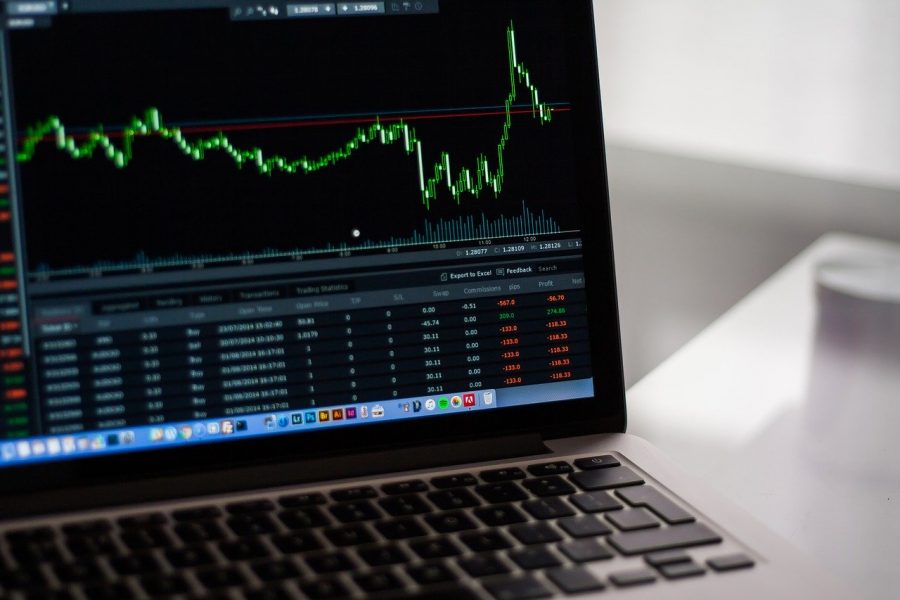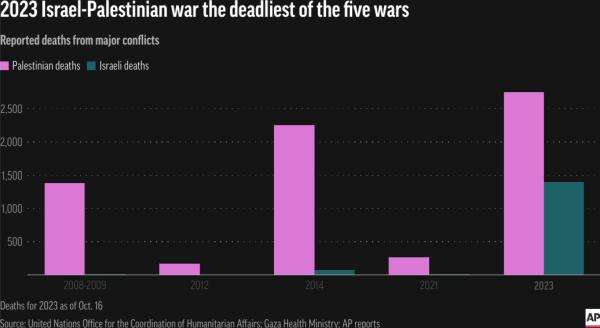Investing For Value: Analyzing A Stock
Disclaimer: The topics covered throughout this article explain some of the fundamentals to analyzing a stock. One must keep in mind that investing always carries risk and there is no guarantee of making a profit. Therefore, a beginner should examine their own financial situation and decide if investing is responsible and affordable at the current time. Note: All numbers related to the stock market are accurate as of the end of Friday, May 1st, 2020.
The new decade has directed a lot of attention towards the stock market. As the Coronavirus accelerated into a global pandemic, extreme actions by governments around the world were enacted in order to limit the spread of the virus. This led to a downward economic spiral that ended the longest bull run on record, and springboarded the country into a possible recession. Unprecedented economic shutdowns have resulted in the market losing years of growth. Although the market has recovered slightly with the Dow Jones Industrial Average (DJIA) back up to 23,723.69 points, it is still down almost 20% from its previous highs present in mid-February.
A decrease in stock prices have attracted many beginner investors who believe there is an opportunity to make a quick buck. While it is true that a dramatic decrease in the price of a stock can lead to profit in the future, one must not forget that the fundamentals to investing have not changed, and must still be followed in order to be successful.
What is the Stock Market?
The stock market gives anybody the ability to invest in shares of companies, exchange-traded funds (ETF’s), mutual funds, and even bonds issued by the government. Millions of shares of the securities just mentioned are traded on the market by buyers and sellers daily. The price of an individual stock is determined by supply and demand, which can be affected by the performance of the company, or political and world events.
Indexes such as the Dow Jones Industrial Average (DJIA) and the Standard & Poor’s 500 (S&P 500) are benchmarks that are used to measure the overall growth of the stock market. These indexes represent averages of the performance of large and stable companies known as “blue chip” stocks. Investors and analysts often use stock indexes when they want to compare the aspects of an individual stock to the market average.
Invest in Value
In this day and age, it is easy to hear about supposed ways to get rich quickly in the stock market. Many will claim that methods such as day-trading, shorting stocks, and investing in penny stocks will yield high profits. Despite the hype, these methods carry incredible risk and do not provide a way to earn stable profits over time. The best way to approach the stock market is by value investing.
Billionaire and renowned investor Warren Buffett is famous for saying that “if you aren’t willing to own a stock for ten years, don’t even think about owning it for ten minutes.” In other words, if one is thinking about investing money into stocks, then he or she must believe in the value and quality of the company. True success in the stock market does not come from buying shares and immediately selling them days or even weeks later. It comes from carefully analyzing and putting trust in just a few companies that offer growth over time. Simply put, value investing is putting money into excellent companies for the long term.
Find An Excellent Company
The Securities Exchange Commission (S.E.C.) requires public companies to conduct quarterly and annual reports that contain a myriad of financial information about their business. One can usually get access to the reports of a company on their website. These reports contain specifics about revenue, profit, assets, liabilities, and other details relating to operations. Here is an example of Apple’s Q1 report from 2020. Typically, investors look for growth in a company’s revenue and earnings while examining a balance sheet. However, there are many other factors to look at while analyzing a company that are more easily digestible through stock metrics.
Professional stock analysts take the financial numbers given by publicly traded companies and create metrics that help investors decipher the health of an individual company. These metrics compare aspects of a company to its individual shares, and are represented through ratios, percentages, and other meaningful numbers. Some of the most common metrics used by analysts will be explained below. Values of the different figures help investors understand the workings of a company, and whether or not the market has priced a stock fairly. Information relating to the price of a stock and its metrics can be found on sites including Yahoo Finance and Morningstar.
What is a Dividend Yield?
Many investors look to put their money into stocks that yield high dividends. Some public companies compensate their shareholders by giving them dividends, while others do not. A dividend is a small amount of money dealt out to investors that are usually given four times a year. If a company issues out high dividends regularly, that can be the sign of a strong business. A popular way to analyze the quality of a stock’s dividends is by utilizing a metric known as dividend yield. This value essentially shows how much a company pays out annually in dividends as a percentage of the overall share price. It is calculated using the following formula: Dividend Yield = Annual Dividend/Share Price x 100.
Apple (AAPL) for example has an annual dividend of $3.28 and a current share price of $289.07. Using the formula mentioned above, Apple has a dividend yield of 1.13% ($3.28/$289.07 = 0.01088 x 100 = 1.134).
Is Apple’s dividend yield good? Well, it depends on what you compare it to. Historically, the S&P 500 Index has had an average dividend yield of about 4.3%, with a current yield average of 2.1%. This shows that Apple offers lower dividends than the market average. However, it is more useful to compare dividend yields to stocks in the same sector. The average dividend yield of technology sector stocks is 1.36%, and varies depending on the specific industry. This would indicate that Apple’s dividend yield is below its sector average as well. Other technology companies such as Microsoft (MSFT) and Mastercard (MA) also have current dividend yields below the market and sector average, with 1.14% and 0.58% yields respectively. Tech companies are not known for being the best dividend stocks because they often reinvest the majority of profits into growing their companies. A lot of giants in the technology sector do not pay dividends at all: Amazon (AMZN), Alphabet (GOOG), Alibaba (BABA), Facebook (FB), Twitter (TWTR), and Tesla (TSLA) do not offer dividends to their shareholders as of 2020. On the other hand, tech companies like Verizon (VZ) and AT&T (T) offer dividends well over the market average of 1.5%. Currently, Verizon has a dividend yield of 4.28%, and AT&T provides a yield of 6.83% It must be noted that recent drops in stock prices have increased the dividend yields of all of these companies. As the price of a share decreases, the yield percentage increases.
Why not just invest in companies with the highest dividend yields?
Although considering a company’s dividend yield can be helpful when investing, it should not be the only metric that one looks at before purchasing shares in a company. A high dividend yield might just indicate that the stock is dropping in value quickly. For example, say Stock A has a share price of $100 and annual dividend of $3, giving it a dividend yield of 3%. If the price of Stock A falls to $50 in a month, its yield will double to 6% (Assuming its annual dividend stays the same). Just because the company’s dividend yield has increased, it does not mean the stock is worth buying. Stock A might now have a dividend yield well above the market average, but its dramatic losses indicate that there is a clear problem with the company.
The same logic can be used to explain why a low dividend yield does not indicate that a company is performing poorly. If the share price of Stock B has steadily increased from $100 to $200 over a year with an $3 annual dividend payout, its dividend yield will be cut in half. Despite rapid growth, Stock B might not immediately increase their annual dividend payout to shareholders in the near future. Even though the dividend yield of Stock B has decreased to 1.5%, it would be foolish to not further analyze the stock and contemplate purchasing shares in the company. Obviously, Stock B’s growth could provide investors with high returns regardless of its relatively low dividend yield. In fact, despite Stock A having a dividend yield four times greater than Stock B, both stocks allocate $3 to each share a year in dividends.
Finally, high dividend yields can indicate that a company is giving away too much of their profit. A sign of this might be stagnant or decreasing revenue and profit from a company over time, while their dividend payouts remain consistently and abnormally high. This mismanagement can stunt the growth of a business. When analyzing stocks, make sure that companies are not not preventing growth for the sake of having a higher dividend yield. One can do this by checking if a company offering the dividends is strong and stable. Growth in both revenue and earnings from quarter to quarter suggests a healthy business. Thus, a company with consistent growth will most likely be able to provide the same dividends, if not more in the future. Another way to check the stability of a company’s dividend yield is by looking at the history of their dividend payouts. If the company has provided stable dividends for multiple years, that is a good sign it will continue to do so.
Earnings Per Share (EPS) & Diluted Earnings Per Share (Diluted EPS)
How much money a company is making is incredibly important. A company’s EPS and diluted EPS are useful tools used by investors that compare earnings to an individual share of stock.
Just as its name suggests, a stock’s EPS is essentially how much a company makes per single share of common stock. Earnings per share is calculated by using the following formula: EPS = Net Income – Preferred Stock Dividends/Average Amount of Common Shares Outstanding. Figures from the past year are typically used when calculating EPS. The reason that dividends from preferred stocks are subtracted from the net income of a company before calculating EPS is because that money is allocated to preferred stocks and not common stocks. Preferred stocks differ from common stocks, in that preferred stocks offer no voting rights in company decisions, but receive “preference” in acquiring dividends. Since common shareholders do not receive this money, it is not factored into a company’s EPS.
Here is an example:
Stock C has a net income of $5 million and paid out $50,000 in dividends to preferred stocks last year. The company also has 3 million shares outstanding. Therefore, Stock C has an EPS of $1.65/share ($5 million – $50,000/3 million = $1.65).
Typically, the higher a stock’s EPS, the better, A high EPS value means a company is making a lot of money when compared to its shares. An impressive EPS report after a quarter can increase the popularity of a stock and elevate the company’s share price. However, sometimes companies are able to skew the accuracy of their EPS value. They can do this by slightly exaggerating components of their balance sheet to get a desired EPS number. Investors take EPS with a grain of salt, and look at the rest of a company’s balance sheet for any irregularities. Additionally, EPS can become misleading inadvertently due to extraordinary items. Extraordinary items are unique and uncommon events that occur to a company that are completely unrelated to their typical business operations (Ex: a natural disaster destroying a company’s factory). This event would temporarily affect a company’s EPS, and could turn away potential investors. To correct for this, more complex formulas are used to offset the extraordinary item.
If an investor wants to assess a company’s earnings per share if all diluted shares were converted to common stock, then they look at diluted EPS. It is calculated with this formula: Diluted EPS = Net Income – Preferred Stock Dividends/Average Amount of Common Shares Outstanding + Diluted Shares. The formula is the exact same as basic EPS, but it adds diluted shares to common shares outstanding. Diluted shares include convertible preferred stocks, employee stocks options and any equity obligations that the company holds. Since more shares are factored into the equation, diluted EPS is always higher than basic EPS. The only exception is if a company has no diluted shares, which means both values would be equivalent. If a company’s diluted EPS is far lower than its basic EPS, then that indicates high dilution.
Let’s look at Stock C again:
As previously established, Stock C has a basic EPS of $1.65/share. However, the company has given out 150,000 diluted shares that are not available to common shareholders. Therefore, Stock C has a diluted EPS of $1.57/share ($5 million – $50,000 / 3 million common shares + 150,000 dilutive shares). This means that if all of Stock C’s dilutive shares were exercised at once, the new EPS value would be $1.57, a decrease of $.08 per share (all of a company’s dilutive shares being exercised at once is highly unlikely).
High dilution can be bad for investors because that means there is a significant amount of diluted shares within the company. Diluted shares such as stock options once exercised become common stock. An increase in common stock means that a single share is worth less than it previously was. This is because that individual share now makes up a smaller portion of the company. Clearly, shares of stock decreasing in value is not good for investors.
Price To Earning Ratio (P/E) & Price/Earnings-To-Growth Ratio (PEG)
The P/E ratio is a metric that directly compares a company’s EPS to their share price. To calculate the ratio, stock analysts use the following formula: P/E = Share Price/EPS. A company’s P/E ratio tells an investor what multiple a single share of stock costs compared to the earnings for that share. If a company has a negative EPS, which means they are losing money, a P/E ratio is not calculated. When calculating a company’s P/E ratio, one can use basic or diluted EPS. Using diluted EPS is considered a more cautionary way to calculate the ratio.
Here are a few examples (These are being calculated with basic EPS):
Starbucks’ (SBUX) current share price is $73.79, and its basic EPS is $2.82/share. Using the given formula, Starbucks has a P/E ratio of 26.17 ($73.79/$2.82 = 26.17).
Zoom Video Communications (ZM) has a share price of $138.56 and basic EPS of $0.09/share. Therefore, Zoom has a P/E ratio of 1,539.56 ($138.56/$0.09 = 1,539.56).
One share of Ford Motor Company (F) is worth $4.92 and the company has a basis EPS of -$0.781/share. Even though a P/E ratio could technically be calculated, a company is not given a P/E ratio if their EPS value is negative ($4.92/-$0.781 = N/A).
What do investors consider a good P/E ratio? Obviously, it is not a good sign if a company does not have a P/E ratio. This indicates that they have a negative EPS value and are therefore losing money. If a company actually has a P/E ratio, a very high value might mean that the stock is overvalued. However, a high P/E ratio does not necessarily signal that a company is performing poorly. Take one of the examples above. Zoom (ZM), a company that offers video conferencing applications, has flourished during the COVID-19 pandemic. Buzz about the stock has inflated its P/E ratio greatly. In fact, the stock is being sold at over 1,500 times its current value (The value of a single share of stock is simply related to its EPS). This high ratio does not automatically mean that Zoom is a bad company, but it does mean the stock is being sold at a way higher price that is deemed appropriate from Zoom’s earnings.
The current share price of a stock is often far off what the earnings of a value suggest it should be. Investors pay for what they believe the company has the potential to be. That is why Zoom’s stock price and P/E ratio are so high. Although the company’s financial information might not indicate that a price of $138.56 is appropriate currently, investors believe that Zoom will have great success in the future, and therefore think the outlandishly high valuation is justified.
As a general rule, when investing for value, a company’s P/E ratio should not greatly exceed 20. However, comparing the P/E ratios of stocks in different sectors is not very useful. Separate industries tend to have varying ranges of what is considered an average P/E value. Finally, just like every other stock metric mentioned so far, P/E ratio should never be the only thing an investor looks at when determining what to purchase.
Along with a company’s P/E ratio, investors also look at Price/Earnings-To Growth (PEG). This metric factors in future growth to a P/E ratio, and can better help an investor understand if the current share price of a stock is justified. It does this by using forecasted earnings to see if a company’s current P/E ratio is appropriate for the expected growth in the near future. The measure is calculated using the following formula: PEG = P/E ratio/ EPS Growth. How is EPS growth calculated? EPS growth can be calculated in many ways. A common way to do so is using the average growth of a company’s expected EPS for the next five years. The value is represented as a percentage (Ex: Stock D has a predicted EPS growth of 10% annually over the next five years).
When analyzing a company’s PEG ratio, a value of 1 means that the stock is fairly valued. Any value under 1 means that the company is potentially undervalued, and might be being overlooked by the market. A company with a PEG ratio over 1 is considered overvalued, but investors get especially wary when a stock’s PEG value surpassses 2. One must understand that the PEG ratio is not perfect. Since the ratio is calculated using predictions of growth into the future, it is not guaranteed that a company will meet the annual goals set. Therefore, investors must look at a company’s expected growth and ask themselves whether or not the predictions seem feasible. It is impossible to know exactly what is going to occur in the near future, which essentially makes projections about growth an educated guess.
Let’s calculate Zoom’s PEG ratio to determine if its stock price is overvalued. As previously stated, Zoom has a P/E ratio of 1.539.56. Additionally, its average projected EPS growth annually over the next five years is 161.04% . This means that Zoom has a PEG ratio of 9.56 (1,539.56/161.04 = 9.56)
Clearly, Zoom’s current share price is incredibly overvalued. Even with very bold predictions of over 100% growth in EPS annually over the next five years, the company’s PEG is way above the preferred number of less than one to one. Considering the fact that a PEG ratio of two means that its stock is overvalued, a PEG ratio of 9.56 demonstrates that the market is inflating the stock price of Zoom to a high degree.
Debt-To-Equity Ratio (D/E)
Understanding the amount of debt a company has is also very important in determining a business’s health. A simple and popular way to analyze a company’s debt is looking at its Debt-To-Equity ratio (D/E). This ratio helps investors determine “leverage”, or how much a company relies on debt to keep things up and running, and grow their business. The metric is calculated using the following formula: D/E = Total Liabilities/ Total Shareholder’s Equity. Shareholder equity is equivalent to a company’s assets subtracted by their liabilities. Examples of assets include: cash, investments, and equipment. Liabilities refer to loans or any other debt that a company has to pay off.
Here is an example:
Let’s say that a company has $50,000 in cash, as well as $75,000 in equipment and other assets. They also have $100,000 in loans. Overall, the company has $125,000 in assets and $100,000 in liabilities. Using the formula above, it can be determined that the company has a D/E ratio of 4. ($100,000/$125,000 – $100,000 = 4). This means that the company has four times more debt than equity.
What is a good D/E ratio? The lower a company’s D/E ratio the better, A low D/E ratio means that the company does not have a high amount of debt when compared to their overall equity. In contrast, a high D/E ratio means that the company might rely too much on debt to finance operations and is highly leveraged. A D/E ratio above 2 means that a company is likely too risky of an investment. However, it must be noted that comparing D/E ratios across companies from different sectors might not be very useful. This is because separate business sectors have distinct ways of using debt to grow their companies.
Additionally, the D/E ratio fails to differentiate between a company’s long term and short term liabilities (A short term liability being anything that has to be paid back in less than a year). Therefore, two companies could have an equal D/E ratio, but one company may have more short term debt than the other and vice versa. Investors like to know if a company’s debt is mostly short term or long term because liabilities with differing lengths have unique risks. To correct for this, there are formulas that specifically look at a company’s short term or “current” debt.
Invest Sooner Than Later
Investing as early as possible is very important, especially in respect to preparing for retirement. Starting young can help an investor make an incredible amount of money because of something called compound interest. As opposed to basic interest that is earned in a bank account, the stock market provides growth not just on the money initially invested, but on the profit that is earned on top of the principal amount. This exponential growth, as well as steady payments into one’s portfolio over the long term can turn $10,000 into $100,000. However, this type of growth proves successful over a span of decades. That is why it is essential to begin investing as early as possible. Due to compound interest, choosing to invest five or ten years later than can result in the difference of tens of thousands of dollars by retirement.

Grant Preves is a senior and is on news team for his third year. He has enjoyed co-hosting The Howl and having political debates with fellow news team...














